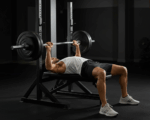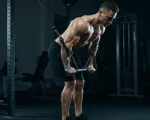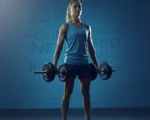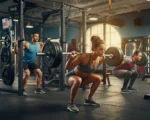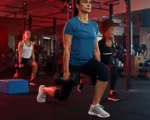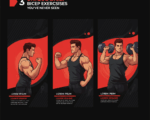Iron deficiency is a critical subject, particularly for female and endurance athletes, given its direct impact on energy levels, endurance, and overall health. While iron deficiency can manifest broadly, it deserves specific focus within the context of athletes, who often require optimal physical performance. The following article dives into the nuances of iron deficiency in female athletes, its causes, symptoms, effects, and practical solutions.
What is Iron Deficiency?
Iron is a vital mineral responsible for facilitating the production and maintenance of healthy red blood cells. These cells, specifically through the hemoglobin protein, transport oxygen throughout your body. When iron levels are inadequate, it results in reduced oxygen delivery to muscles, causing fatigue and breathlessness.
Among athletes, females in particular are at higher risk of developing iron deficiency due to factors such as menstruation, dietary choices, and the physical demands of training.
Types of Iron Deficiency
Female athletes experience two main forms of iron deficiency:
- Iron Deficiency Anemia (IDA):
IDA occurs when the body cannot produce sufficient hemoglobin due to critically low iron levels. Symptoms include severe fatigue, weakness, and diminished athletic performance.
- Iron Deficiency Without Anemia:
This condition is subtler and characterized by low ferritin (a protein that stores iron) levels but normal hemoglobin counts. While milder, untreated low ferritin can eventually progress to iron deficiency anemia.
Causes of Iron Deficiency in Female Athletes
Female athletes face several unique physiological and environmental factors that deplete iron levels:
- Dietary Insufficiency: Athletes who restrict red meat or follow plant-based diets often fail to consume bioavailable (easily absorbed) iron.
- Iron Absorption Issues: Gut health issues or gastrointestinal conditions can impede iron absorption in the small intestine.
- Menstruation: For menstruating athletes, monthly blood loss is a primary contributor to iron depletion.
- Exercise-Induced Factors: Athletes can lose iron through sweat, as well as gastrointestinal microbleeding caused by intense endurance training.
The Impact of Iron Deficiency on Athletic Performance
Iron deficiency has profound consequences for athletic performance:
- Reduced Energy Levels: Insufficient iron diminishes oxygen delivery to muscles, leaving athletes feeling fatigued even during low-intensity activities such as climbing stairs.
- Decreased Endurance: Low iron levels hinder athletic stamina, making it difficult to sustain performance during prolonged exercise.
- Weakened Recovery: Suboptimal oxygen transport slows muscle recovery and healing after training sessions.
For athletes pushing their limits, untreated iron deficiency can cause a severe dip in competitive performance.
Recognizing Iron Deficiency
While fatigue is the most common symptom of iron deficiency, only a blood test can confirm the condition. A complete diagnostic approach includes the following tests:
- Complete Blood Count (CBC): Measures red blood cell levels and hemoglobin concentration.
- Iron Panel: Analyzes different aspects of blood iron levels.
- Serum Ferritin Test: Assesses ferritin protein levels, which indicate iron storage.
It is essential to interpret these tests carefully, particularly for athletes, as normal ferritin levels for the general population may not suffice for optimal athletic performance.
Addressing Iron Deficiency
Daily Iron Requirements
The National Institutes of Health recommends 18 mg of iron intake per day for menstruating females, though athletes with diagnosed deficiency may require higher doses under medical supervision. Pregnant, breastfeeding, and post-menopausal women have varying needs and should consult a medical professional.
Diet Recommendations
The most bioavailable source of dietary iron is heme iron, found in red meat. Though non-heme iron (found in plant-based foods like spinach and lentils) is less readily absorbed, combining it with vitamin C can boost its uptake.
Key dietary tips to prevent deficiency include:
- Including lean red meat, shellfish, fortified cereals, and dark leafy greens in your meals.
- Pairing iron-rich foods with vitamin C, like oranges or tomatoes.
Iron Supplementation
Athletes with clinically diagnosed iron deficiency can benefit from iron supplements. However, supplementation should always be guided by a healthcare provider to avoid risks such as hemochromatosis or gastrointestinal discomfort.
Here are tips for effective supplementation:
- Timing Matters: Take iron in the morning, preferably on an empty stomach for optimal absorption.
- Avoid Calcium and Caffeine: Calcium-rich foods (like dairy) and beverages like coffee and tea can inhibit iron absorption.
- Pair with Vitamin C: Acidic drinks like orange juice enhance iron uptake in the small intestine.
Building Awareness to Improve Performance
Iron is not just about boosting athletic ability. Maintaining optimal iron levels is also a marker of overall health and well-being. Athletes should approach iron deficiency management proactively by prioritizing balanced nutrition, routine blood tests, and professional guidance. These steps can ensure that their muscles and energy systems are primed for peak performance.
Professional Support for Athletes
Athletes can benefit from working closely with sports nutritionists, who can curate meal plans suited to specific needs and dietary preferences. For those experiencing symptoms or seeking to optimize their performance, a consultation with a healthcare provider or sports medicine expert is vital.
Closing Thoughts
For female athletes, maintaining proper iron levels isn’t just important for excelling in sports; it’s essential for leading a healthy and energized life. Addressing iron deficiency early reduces the risk of prolonged fatigue, injury, and performance decline.
If you’re an athlete navigating dietary restrictions or experiencing signs of deficiency, don’t wait. Book an appointment with your healthcare provider or consult a sports nutrition specialist today to create a tailored action plan that works for you.

